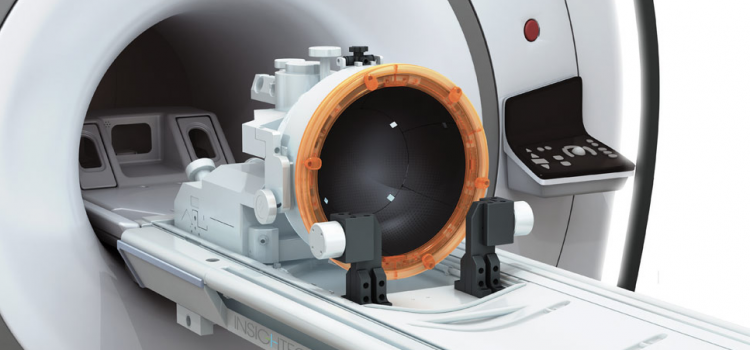-
Phone
1300 17 44 97
-
Fax
02 8580 4867
-
-
Correspondence
Suite 1404, Level 14
St Vincent’s Private Hospital
406 Victoria Street
Darlinghurst NSW 2010

St Vincent’s Darlinghurst campus is set to become the first in the southern hemisphere with the capability and medical know-how to provide a new, non-invasive brain treatment option for patients suffering major body tremors – thanks to a St Vincent’s campus team which includes St Vincent’s Clinic neurologist Dr Stephen Tisch.
Stephen played a key role in a three-person team, spearheaded by radiologist Dr Yael Barnett and supported by neurosurgeon Dr Ben Jonker, which has been instrumental in the research, practise and preparation of the business case for the introduction of the MRI guided focussed ultrasound (MRgFUS) treatment at both St Vincent’s Public and Private Hospitals.
With their business case now approved by St Vincent’s Health Australia, MRgFUS will likely be available for the first time in Australia this year.
Funding for the $6million project has been the result of specific fundraising by the Sirens, led by Sr Jacinta.
Stephen, who has worked from St Vincent’s Clinic since 2008 and specialises in movement disorders and deep brain stimulation, spent the seven months up until the end of January this year working as a visiting neurologist at the famed Hopital de Pitie-Salpetriere in Paris. From Paris, he travelled to London and Madrid to further study the benefits and techniques of MRgFUS.
“For those who have either not wanted or been unsuitable for Deep Brain Stimulation (DBS, which involves a brain pacemaker being surgically-inserted into the patient’s brain) there has been little relief prior to MRgFUS coming onto the scene,” Stephen explains. “With medication often ineffective, many patients have simply had to live with the effects of their tremors. This can leave some patients unable to hold a cup to drink, eat or write, resulting in major disability and social stigma.”
MRgFUS involves shaving the head and a local anaesthetic only; allowing doctors to ‘pin’ the patient’s head into a frame to prevent movement. The patients’ head is then placed into a special dome-shaped MRgFUS head unit, which uses high frequency ultrasound waves of 650khz and is water-filled. This allows the 1024, precision MRI-directed ultrasound beams to travel through the scalp and skull directly into the exact part of the brain (the thalamus) to create a small lesion which blocks the tremor. This lesion is made on the opposite thalamus to the side of the patient’s body affected by tremors.
“The results are immediate and permanent,” says Stephen, who adds that MRgFUS has other uses beyond treating tremors.
“We’re also looking into developing its use for patients with Parkinson’s Disease and Dystonia. “Plus, it’s also had some positive indications in the treatment of Alzheimer’s, as well as in neuro oncology, because it can be used to disperse plaques or open up the blood/brain barrier allowing drug to focus on the tumour-affected area of the brain only.”